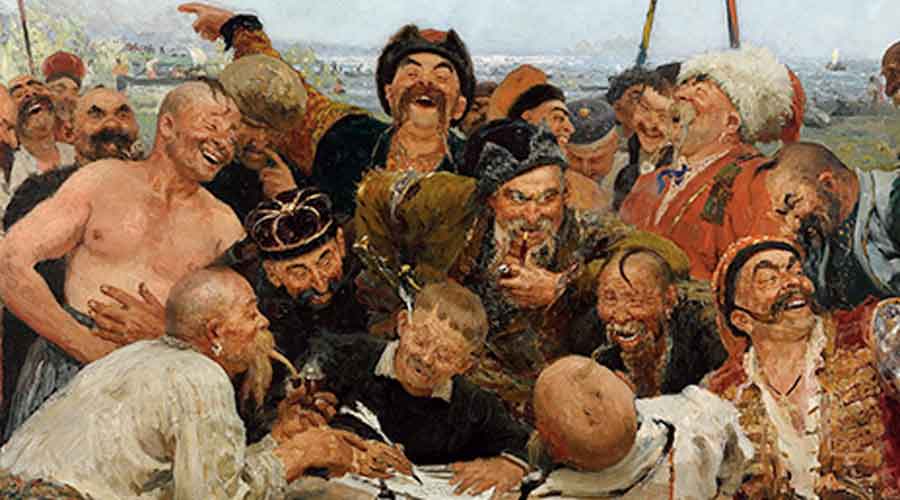In Ilya Repin’s painting, Reply of the Zaporozhian Cossacks (picture), the Cossacks are portrayed as orientalized children of nature. The scrivener, resembling the Ukrainian, Nikolai Gogol, attempts to render this carnivalesque folk culture in writing. He embodies the West, with its “written language and legalistic rationality”.
Most of Russian history offers two views of the Russian identity — Westerners assumed that Russia was part of the West; Slavophiles saw Russia as part of a Slavic civilization. Peter the Great attempted to Westernize his empire. He had the famed Russian capital, St Petersburg, built as part of his project to modernize Russian society. But this was also the time when Ukrainians were gradually absorbed into the Russian imperial system. Donbas in southeastern Ukraine, which was seized by Russia-backed separatists in 2014, had originally come under Russian control in 1768.
Between the late 18th century and 1917, those who lived in the Russian and the Austro-Hungarian empires owned up to their Ukrainian identity. This made the formation of a unified Ukrainian national identity complicated. The country’s East felt a greater affinity with Russia. It is this splitness and the historical experiences that have come to form the basis of Vladimir Putin’s claim that this part of Ukraine had been given away to Russia. One way of understanding the Ukraine-Russia tension is to view it through the prism of the West versus East rhetoric. The Kremlin views Ukraine’s Western orientation as an existential threat while Ukraine, as it has now been proven, has reasons to look at Russia as a threat to its sovereignty. But the Ukrainian identity, divided between East and West, between its Russian lineage and European aspirations, remains at the heart of the crisis.
This is not to undermine the East-West dichotomy. Russia, arguably, mounted an attack to not only thwart Ukraine’s possible integration into the West but to also restore its honour. In his book, Russia and the West from Alexander to Putin: Honor in International Relations, Andrei P. Tsygankov identified honour as a key concept by which Russia determines its relations vis-à-vis the West.
Meanwhile, in 2010, Ukraine’s new Law on Foreign and Domestic Policy adopted a non-aligned status in a departure from a legislation in 2003, which had declared NATO membership to be the country’s foreign policy goal. The new law named both Russia and the EU as Ukraine’s strategic partners.
The current president, Volodymyr Zelensky, has reasons to feel jilted by the European powers, which, having fomented Eurocentric ambitions in a large section of Ukrainian people since the Orange Revolution, are now refusing to stand up to Russia. There are whispers that Russia may instal Viktor Yanukovych as the next president after the fall of Zelensky’s regime.
Russia’s eagerness to impose a puppet government in Ukraine would, ironically, bring it closer to the West. After all, history is witness to the United States of America ousting governments in, say, the Middle East on an average of once per decade. This apart from its predations on Cuba, Puerto Rico, the Philippines, Nicaragua and Honduras as well as aggression against Iran, Guatemala, South Vietnam and Chile.
Ukraine is paying the price for its Western ambitions, while countries and institutions representing the West are expressing benign rage at the Russian invasion. Are not the ironies of the Ukraine crisis layered?











